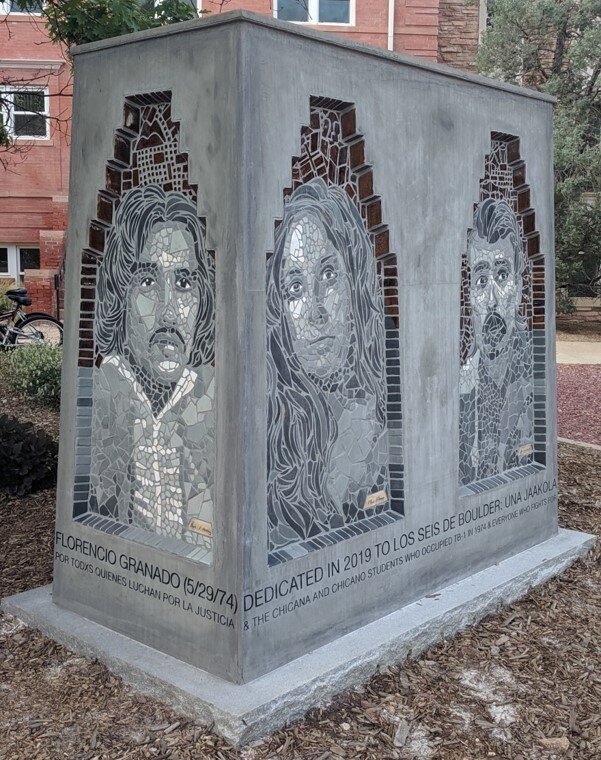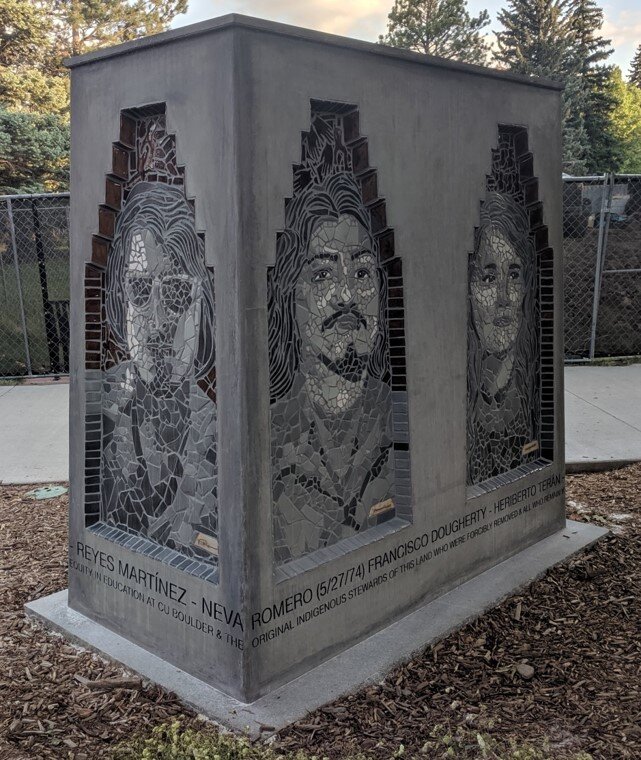Liberating Subjugated Histories: Stories from the Chican@ Movement
By Lincoln Bergman, Freedom Archives Co-founder and Volunteer
The Freedom Archives embeds learning in all of our efforts. Our audio CDs and documentary films inform the audience about significant aspects of recent history, often revealing “subjugated” histories—events and individuals we should be aware of that do not appear in standard textbooks or have been buried under misinterpretations.
To amplify the teaching potential of our most recent documentary, Symbols of Resistance: A Tribute to the Martyrs of the Chican@ Movement, the Archives has created a curriculum which provides a clear-cut set of flexible activities and carefully selected resources from archival documents, other media, and related websites. These activities and resources enable teachers and community educators to use the film as a stimulating gateway into a deeper understanding of its content and historical context.


Sculpture honoring Los Seis de Boulder – installed on Colorado University, Boulder campus October 2019.
Of great interest is a short film we composed about Lupe Briseño and her leadership around efforts to unionize Chicana carnation workers in the late 1960s in Brighton, Colorado. Lupe was the catalyst for an eight-month strike with the backing of the National Floral Workers Organization (NFWO) demanding better wages, benefits and working conditions. Although less known than the farm-worker struggles of the same period, this important piece of Chican@ history illustrates the importance of Chicana leadership in workplace struggles for dignity and justice.
MLN-M: “Towards Socialist Unification” – Newly Digitized Archival Material
To give you a sense of the curriculum’s breadth, you’ll find a succinct discussion of the term Aztlán, from its ancient roots to current usage, of the changing meaning and spelling of Chican@, and the consequences of the brutal US war against Mexico, with a summary of land grants and their betrayals. In terms of current and future relevance, the curriculum relates the history documented in the film to present-day struggles for justice – for immigrant rights, and against the ongoing repression of ICE raids, detention, and mass deportations.
The six main activities all emphasize critical thinking and include: Immediate Reactions to the Film; Celebrating Our Martyrs; Understanding Political Cartoons; Student Activism and You; My Origin Story; Immigration, Then and Now. All are clearly written, freely accessible, and provide plenty of opportunities for the teacher or community educator to expand upon, modify, and adapt the activities. All encourage creativity, especially the cartoon activity.
A substantial body of archival documents, flyers, audio and video connections accompanies the curriculum, including the 1972 La Raza Unida Convention, thanks in large part due to the vibrant radio collective Comunicación Aztlán, whose programs are a part of the Freedom Archives.
Symbols of Resistance DVD Cover
As with all of our work, we welcome comments and suggestions on our curriculum development for this film and other Archives productions.
Lincoln Bergman is a poet, editor, educator and radio journalist. He was News Director at KPFA-FM in Berkeley in the late 1960s and early 1970s and has written, produced, and/or narrated numerous radio programs in the Archives. He was a foreign correspondent for Pacifica Radio in Havana, and worked for a year at Radio Havana Cuba from 1973–74. He is a member of the Revolutionary Poets Brigade and was Co-Poet Laureate of Richmond, California from 2014–2016. He is the author a volume of collected poetry, Chants of a Lifetime. His website is www.lincolnbergman.com.

